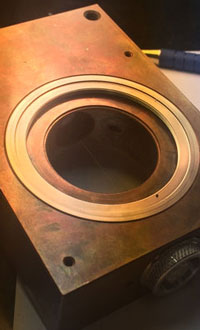Advanced Double-Shell Target Designs for Inertial Fusion Energy (14-ERD-031)
Precision Gamma-Ray Signatures for Long-Lived Radioactive Nuclei (15-ERD-015)
A Dense-Plasma Focus Device as a Compact Neutron Source (15-ERD-034)
Application-Driven Research into Multiscale Modeling of Laser–Plasma Interactions (15-ERD-038)
Single-Shock Platform for Activation Studies with a Prompt Source of Fast Neutrons (15-ERD-046)
Transport and the Equation of State for Asymmetric Plasma Mixtures (15-ERD-052)
Multiframe, Single Line-of-Sight X-Ray Imager for Burning Plasmas (15-ERD-064)
Self-Consistent, Three-Dimensional Calculations of Electromagnetic Pulse Propagation (15-ERD-066)






